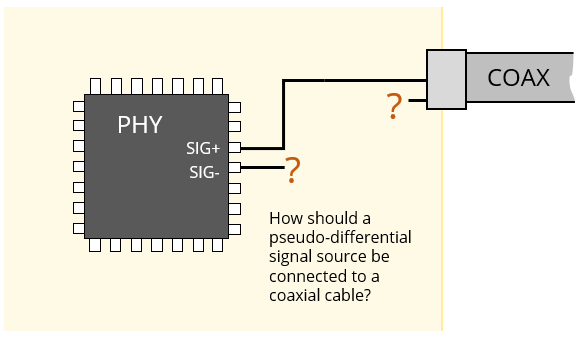EMC Question of the Week: July 25, 2022

A high-speed digital signal source on a circuit board produces the pseudo-differential outputs SIG+ and SIG-. When SIG+ is 3.3 V (relative to the ground plane), SIG- is 0V. When SIG+ is 0 V, SIG- is 3.3V. If SIG+ is connected to the center conductor of the coaxial cable connector through a 10 cm microstrip trace, then SIG- should generally be connected to
- the outer conductor
- the ground plane
- the 3.3-V plane
- nothing
Answer
The best answer is “d.” It would not be wise to attempt to send a balanced high-speed differential signal through an unbalanced transmission line (like a coaxial cable). If the cable must be unbalanced, the signal should be single-ended. This can be achieved by sending one of the outputs (either SIG+ or SIG-) on the coax and discarding the other output. Shorting SIG- directly to ground or the 3.3-V plane would draw unnecessary and excessive current. It's better to leave the output floating.
In most situations, when it is necessary to transmit a pseudo-differential on a coaxial cable, one side of the output is either left open or terminated with a series resistor and capacitor. Of course, if we really wanted the whole 6.6-volt signal transmitted, SIG- could be connected to another coaxial cable. This would essentially be sending two complementary single-ended signals on two coaxial cables.
Note that if the output had been truly differential (e.g., the secondary of an isolation transformer), then SIG- could simply have connected directly to the ground plane to make the source single-ended.
Have a comment or question regarding this solution? We'd like to hear from you. Email us at
